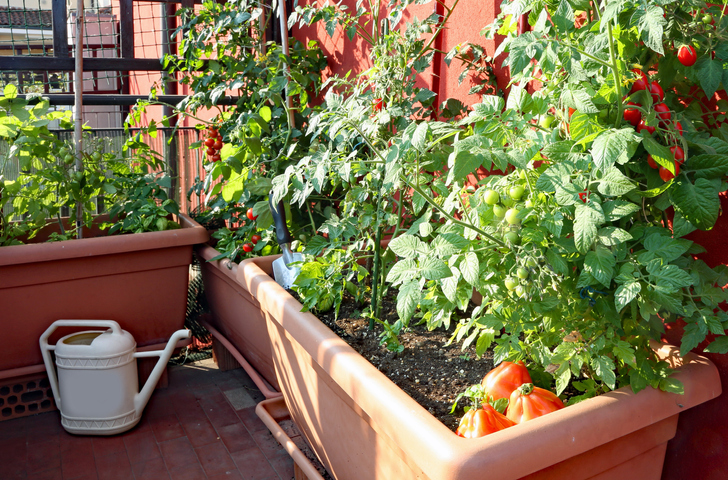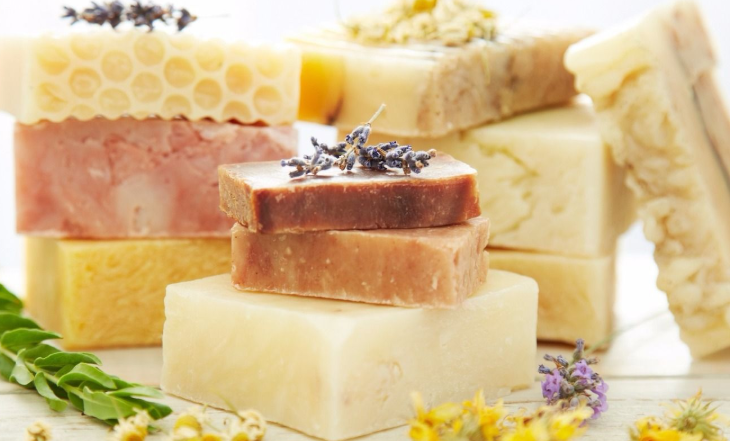How to start gardening

A friend of mine who lives in a city doesn’t have any outside space but she does have a room with a large glazed roof and long windows at one end. When I last visited I was surprised to find this room filled with palm trees, succulents and a number of productive lemon trees.
Other city dwellers create vibrant little gardens on their balconies. Why not? Given the current lockdown conditions I am going to look at one vegetable, one herb and one flower. All three are central to my gardening life and to my current larger-than-average garden, but they would be central to any garden I planned, including one in a sunny south-facing window box.
Tomatoes
There is nothing quite like the moment when you pluck your first warm tomato from the vine in high summer and pop it into your mouth. It is the moment when a new gardener steps into the conclave of the green-fingered, a moment of pure joy.
For some reason, growing tomatoes seems to strike fear into the heart of most new gardeners. They start analyzing all sorts of technical advice online or in books and simply give up. Actually tomatoes are quite easy.
Tomato seeds want sowing early but there is still time if you get cracking. Sow them onto the surface of compost, then water, cover and watch. As soon as two true leaves emerge, lever the little saplings out of the tray with a biro and give them their own pot. Drop the stem in as deep as you can so the plant will have stronger roots. Once the danger of frost is past, plant them out and again bury the new stem deeply so the plant can make new and even stronger roots. Give them a bamboo support. If you do nothing else to the plant except keep it watered you will end up with a messy sprawling plant but a decent harvest.
If you wish to get more technical at this stage nip out the stems that form at forty five degrees between the boughs and the main stem. Towards the end of the summer remove any excess foliage from plants that is shading ripening fruit. That’s it.
Tomatoes want a decent root run so if you are growing them in a container try to make sure it is a decently sized one. Actually (balcony gardeners, take note) one advantage of growing them in a container or grow-bag is that you can drag it around periodically to make sure that the plant is getting the most of the sun. If your tomato will spend some time outside (as mine do) choose a variety that is appropriate for outdoor growing.
Basil
Of all the herbs I grow I think basil is the one I get most excited about. For those with large country gardens there is no excuse for not growing a whole bed of it. Try to give each plant a decent amount of room and think of them more as little shrubs. But basil is just as perfect a plant for smaller settings and in fact there is a variety marketed for windowsills.
Unlike Mediterranean herbs, once planted out, basil wants good and consistent watering and also picking if you wish for it to be at its best. However, when you sow the seeds (best done into trays) and nurture the little seedlings, keep the watering modest. Larger plants can go out after the risk of frost has past.
It is worth noting that the flowers are edible and the odd one can be added to a dish. If you want more than a leaf or two pick or snip a long wand from just above a pair of leaves and the plant will break new growth for future picking. In fact I cut long wands of basil all through the summer and fry them in oil with white fish. Nothing else is needed except a pinch of salt and pepper, but I also use handfuls of the stuff in salads.
There is an old gardening lore that growing basil close to tomatoes improves the flavor of the tomatoes. I have no idea if this is true but I find it useful to grow them near each other anyway because it makes foraging for lunch easier. Either way it builds the case for these two plants growing in close proximity in a smaller city garden just as in a large country one.
There are Italian strains of basil on offer but I am not yet convinced that an Italian strain grown in Britain tastes the same as an Italian strain grown in Italy. I tend to stick to the varieties marketed as appropriate for British growing.
Pelargoniums
More often (though technically incorrect) called geraniums these are among my favorite flowering plants. Like tomatoes and basil, they have generous, fragrant foliage and half the pleasure of growing them is simply rubbing it and having a sniff as you pass. But they can also be relied upon to flower, and flower, and flower. Pinch off spent blooms when you pass and they will keep going almost indefinitely, including (so long as you bring them in and pop them on a windowsill) during the winter.
Coincidentally it is useful, when growing on a windowsill, to place pots on little saucers because not only does it save the paintwork it also means you can easily tell when they have had enough water. Don’t over-water your pelargoniums during winter, it is far more likely (as with most houseplants) to do them more harm than under-watering would.
When you bring them in for the winter you can cut them back ruthlessly or just leave them to carry on flowering. I tend to do the latter and they hit spring a little lank but fine. If you follow this regime over years (taking them out for the summer and in for the winter) their trunks become thicker and thicker until the frame of the plant becomes lovely and stately in its own right, to my eye anyway.
Pelargoniums are also the easiest and most forgiving of plants for those who want to take cuttings. Each spring take a few cuttings from the new growth, try to choose a segment that isn’t already making a flower, and slide it into a little pot with compost, between the compost and the edge of the pot. Water and a watch a new plant grow.
Some pelargoniums are grown particularly for the smell of their foliage, particularly those with the high clear note of citrus and some of these are even appropriate for tisane. There are many colours available but I like pelargoniums that flower in a solid bright red.
No Fear Gardening
by Charlie Hart
Desperate to use this time to get out into your garden but don't know where to start? This is the book you need!
'An easy read with no gardening know-how required . . . Hart's enthusiasm flows from the page . . . Up-to-date thinking on wildlife, wellbeing and no-dig cultivation pop up too, which are applicable to gardens big and small, making this a perfect introduction to gardening without the fear of doing something wrong' Gardens Illustrated
Are you frightened of your garden? Terrified of accidentally bringing death to a sap-filled friend? Put off by the overwhelming number of species of plants and their baffling Latin names? Whether your garden is a sprawling country plot or a kitchen windowsill, gardening is good for the mind, body and soul. Yet just the thought of picking up a pair of secateurs can strike fear into even the bravest of hearts, meaning we often don't make the most of our personal Edens.
Charlie's 'no fear' approach to gardening will help you find the easy path to beautiful borders and jampacked vegetable beds. A reassuring, simple-to-use handbook, No Fear Gardening is aimed at all budding gardeners and anyone who might be missing out simply because they don't know how and where to start. Whatever the reason, this book will answer all your questions. From digestible lists of what seeds to plant where, guides to pruning and how to cope with difficult spots to Charlie's favourite vegetables to grow (and, more importantly, eat) and essential pieces of kit, Charlie has condensed a wealth of gardening know-how into easy-to-follow and practical tips.
With its unique, liberating approach, No Fear Gardening will inspire you to dust the cobwebs off your watering can and get your garden blooming, whatever the weather or season.








